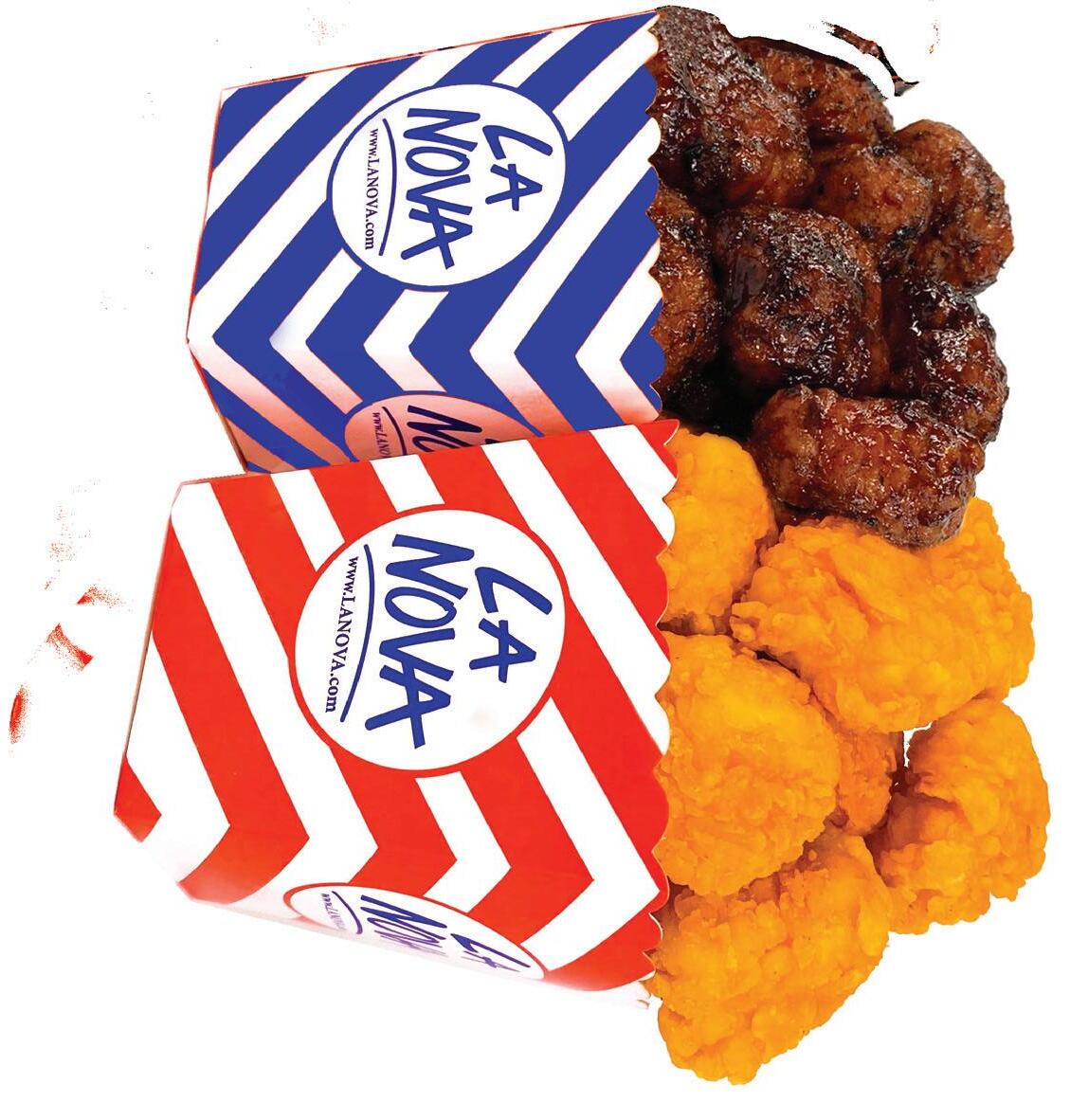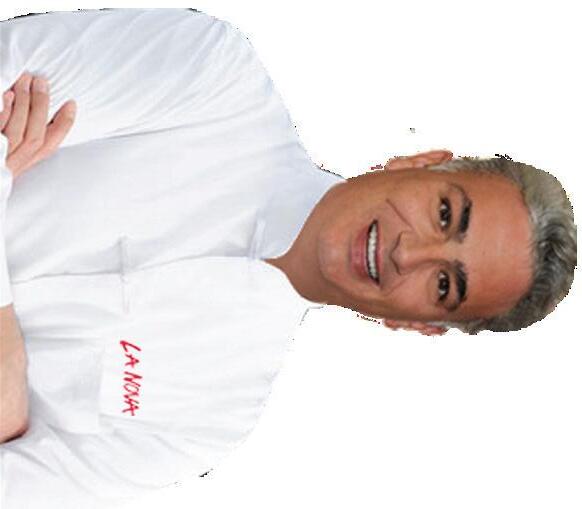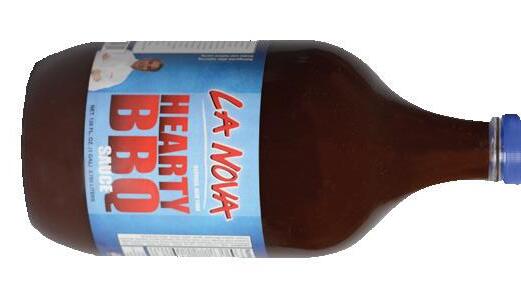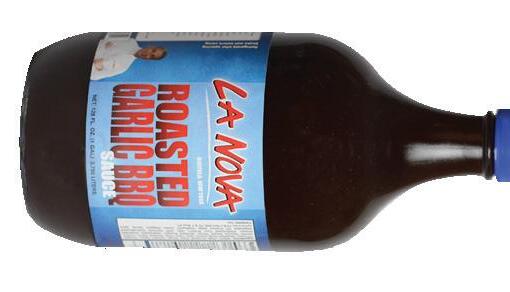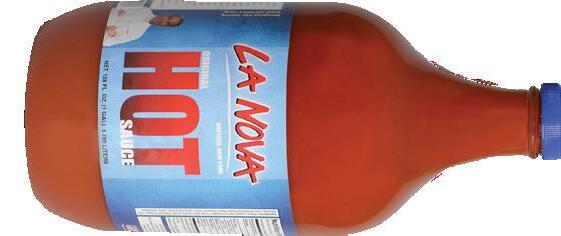














WestRock takes food safety as seriously as you do. Our pizza box liners, medium and finished products are routinely tested by independent, certified laboratories to ensure that only safe materials go inside. Final packaging meets FDA requirements for food contact.


Find out more at westrock.pizzaexpo365.com.

westrock.com/pizza pizzaboxes@westrock.com






















There’s magic in the air at Market Pizza, where Megan Jones-Holt casts spells of deliciousness with wild-game pies topped with venison, kangaroo and camel meat.

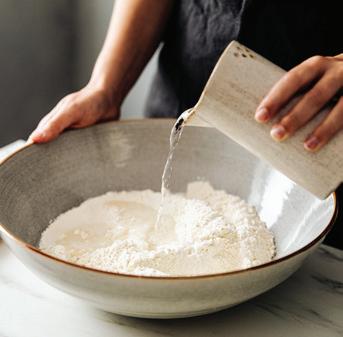





Improving Your Pizza Dough With a Water Filtration System
Water filtration systems can purify or soften your water while even replicating regional attributes, such as New York water.
PMQ.com/water-filtration
Your Dough Is in Your Database
Stop relying on the “hope and pray” marketing strategy and start using your POS data to create a moneymaking customer retention plan.
By Matt Plapp, Restaurant Marketing That WorksPMQ.com/dough-in-your-database
Picnic’s Pizza Making Robots on the Way in 2021
As Picnic gets ready to roll out its fully automated Picnic Pizza System, CEO Clayton Wood explains its capabilities in an exclusive Q&A with PMQ.
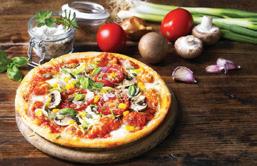

PMQ.com/clayton-wood
What if Every Restaurant Served Plant-Based and Sustainable Meals?
As meat-free options become commonplace, Ilana Braverman of DefaultVeg shares tips for incorporating more plant-based foods into your pizza menu.
PMQ.com/ilana-braverman
Consumers Snub Domino’s in Choosing Most Craveable Chain Pizzas
Detroit-style pies from Jet’s Pizza earned the highest praise from consumers surveyed by Technomic.

PMQ.com/craveable-chain-pizzas
What Are the Elements of an Authentic DetroitStyle Pizza?
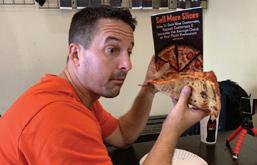
Imitators abound, but Detroit-style pizza has some critical elements to keep in mind if you’re aiming for the real thing.
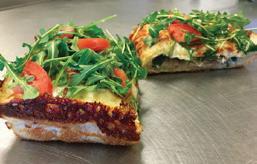
PMQ.com/authentic-detroit-style-pizza
of PMQ, Inc.
662-234-5481
Volume 25, Issue 2
March 2021
ISSN 1937-5263
PUBLISHER
Steve Green, sg@pmq.com ext. 123
CO-PUBLISHER
Linda Green, linda.pmq@gmail.com ext. 121
EDITOR IN CHIEF
Rick Hynum, rick@pmq.com
ART DIRECTOR
Eric Summers, eric@pmq.com
SENIOR COPY EDITOR
Tracy Morin, tracy@pmq.com
IT DIRECTOR
Cory Coward, cory@pmq.com ext. 133
DIRECTOR OF RESEARCH
Blake Harris, blake@pmq.com ext. 136
TEST CHEF/USPT COORDINATOR
Brian Hernandez, brian@pmq.com ext. 129
SOCIAL MEDIA DIRECTOR
Ingrid Valbuena, ingrid@pmq.com ext. 137
FOOD PHOTOGRAPHER
David Fischer, david@pmq.com
CHIEF FINANCIAL OFFICER
Shawn Brown, shawn@pmq.com
ADVERTISING
SALES DIRECTOR
Linda Green, linda.pmq@gmail.com ext. 121
SENIOR ACCOUNT EXECUTIVE
Tom Boyles, tom@pmq.com ext. 122
SALES ASSISTANT Brandy Pinion, brandy@pmq.com ext. 127
PMQ INTERNATIONAL
PMQ CHINA
Yvonne Liu, yvonne@pmq.com
PMQ RUSSIA
Vladimir Davydov, vladimir@pmq.com
PMQ PIZZA MAGAZINE

605 Edison St. • Oxford, MS 38655 662.234.5481 • 662.234.0665 Fax
PMQ Pizza Magazine (ISSN #1937-5263) is published 10 times per year.
Cost of U.S. subscription is $25 per year. International $35. Periodical postage pricing paid at Oxford, MS. Additional mailing offices at Bolingbrook, IL. Postmaster: Send address changes to: PMQ Pizza Magazine, PO Box 9, Cedar Rapids, IA 52406-9953.
Opinions expressed by the editors and contributing writers are strictly their own, and are not necessarily those of the advertisers. All rights reserved. No portion of PMQ may be reproduced in whole or part without written consent.

“We need a Christmas miracle this holiday season,” the owners of Howdy’s Texas Grill’d Pizza posted on Facebook. And they got one, as customers flooded them with more business than they could handle.
As sales plummeted due to COVID-19, the owners of Howdy’s Texas Grill’d Pizza needed a “Christmas miracle” to stay in business. And thanks to the good people of College Station, Texas, they got one. A December 17 post on the single-unit pizzeria’s Facebook page noted, “We will not be able to stay open without frequent and repeating local support….Business has dropped more than 50% since last summer.…We need y’all to come back and help us save not just Howdy’s but all of these amazing local restaurants [that] are at huge risk right now.” They didn’t have to ask twice. By the next night, Howdy’s had run out of dough before 7 p.m., and the same happened on the following night, too. The pizzeria also lowered its prices and began offering deep discounts on family meals, then drummed up more business with an ugly-Christmas-sweater promotion. “We’re not looking for charity,” general manager Bryan Lariviere-Crane told a local TV station that covered Howdy’s big comeback. “We want the opportunity to serve, and not just on a one-time basis but consistently.…Make us part of your routine.”



Here’s one way to get your pizzeria featured in the local newspaper: Name a signature pie after one of its reporters. To be fair, that probably isn’t why Jeff Bekavac, chief culinary officer for Dallas-based Cane Rosso, honored longtime Dallas Morning News sportswriter Evan Grant with a pizza called the Beat Writer. But the small chain, with six locations in Texas, did get some positive coverage from the paper. The pizza will be offered at Cane Rosso’s Arlington location, along with a pizza named for Texas Rangers outfielder Willie Calhoun. Bekavac said the Beat Writer pizza is a variation on Cane Rosso’s famous Honey Bastard pie, featuring bacon marmalade, meatballs, Sweety Drop peppers and mozzarella. Grant gave the pizza a big thumbs-up, noting, “I’m pretty much a meatball in life. And bacon is kind of a ham, and I’m definitely hammy.” He added, “I hope that if people do try this pie—because there’s a lot of good pies on the [Cane Rosso] menu—that they will think it’s as fun and delicious as I do.”
Because if your phones and web ordering are down, you may as well send everyone home. We become your phone company and provide a backup Internet connection

Increase revenue and lower cost
• No Busy Signals
• Call Recording
• Call Queuing / Auto-Answering
• Multiple (random) start-of-call upsell messages




• On-hold music/message loops
• Detailed reports—hold times, lost calls etc
• Callerid delivered to POS system
• Auto-attendants—”If you have arrived for curbside pickup press one”
• When your Internet fails our cellular backup router keeps your phones, credit card processing and web orders all working.
• The backup kicks in automatically in seconds. So quickly you will not even drop calls in progress when your primary Internet goes down!
• The same router can be used to create chainwide virtual private network to connect your locations.
• SD-WAN LTE/LTE-A (4G/5G) modems.
Ask us how we can make your life easier and improve your customer ’s experience during these difficult times. Our rapid response support team averaged almost 500 custom changes per week in April-June. As “the rules” changed for our clients, we updated messaging and call flow to minimize impact, maximize revenue. Let PizzaCloud do the same for your stores.
Maintain control, and get the calls off the front counters. For a small chain all you need is a large office at one location. Cut labor hours up to 50% and/or shift labor to lower cost regions while increasing average ticket . Eliminate the constantly ringing phones at the front counters! Tight integration allows calls to overflow to stores, so you can choose when to staff the call center.
The same tight integration, same detailed reports and call recordings in your hands, same ability to overflow back to the stores, but you let some one else hire and manage the staff. We can provide this service to you or work with your existing call center provider.
If you have any interest in call centers call us to discuss options or visit www.pizzacloud.net to register for a webinar.


If Elvis Presley really is still alive, he might have been hanging out in disguise at Pizzeria 201 in Montgomery, Minnesota, for his birthday. Owned by Diane and Troy Domine, the independent pizza shop baked up a one-of-a-kind pizza in honor of the King’s birthday and garnered coverage from the local press. Called the Elvis Presley Pizza, it featured peanut butter, banana slices and maple syrup. It could be topped off with the guest’s choice of bacon or chocolate. Pizzeria 201 is also known for signature pies like the semi-Hawaiian-style Chicken-in-a-Grass-Skirt, featuring Alfredo sauce, garlic chicken, pineapple and pepperoncini with a sprinkling of coconut shavings and mozzarella and cheddar cheeses.

As National Guard soldiers roamed the halls of the U.S. Capitol Building during the impeachment hearings in mid-January, Rep. Vicky Hartzler (R-Missouri) and Rep. Michael Waltz (R-Florida) made sure they had something better to eat than MREs. The legislators treated the soldiers to pies from We the Pizza on nearby Pennsylvania Avenue, and, in a show of support for the troops and their defense of American democracy, the pizzeria offered additional ones for free. We the Pizza donated a free pizza for every one that was purchased, resulting in 100 pizzas sent to the Capitol on January 14, and 150 more the next day. The pizzeria also matched every pie donated by customers on its online ordering site. “These men and women are coming from all over the country to protect not just our Capitol building and our businesses but democracy,” said Micheline Mendelsohn Luhn, deputy CEO for Sunnyside Restaurant Group, which owns four We the Pizza locations in the D.C. area as well as other restaurants. Mendelson Luhn told Eater.com that the restaurant’s sales had dropped 50% during the pandemic, but the arrival of the troops had boosted business. “We haven’t been doing numbers like this since March of last year,” she said.


















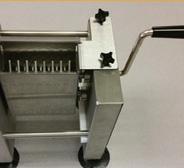




Already the top pizza chain in the U.S. in terms of revenue—with nearly $7.1 billion in domestic system-wide sales last year—Domino’s aims to be “a dominant No. 1” in the coming years, CFO Stu Levy told QSR magazine. The company, which currently operates more than 6,200 stores, believes there’s room for a total of 8,000 Domino’s locations nationwide. In the fiscal year that ended November 2020, Domino’s held 22% of the country’s total quickservice pizza market, according to research firm NPD Group. In contrast, other major chains had a combined 30%, while regional chains and independents accounted for 48%. Domino’s also captured 36% of the U.S. pizza delivery market, compared to 27% for other major chains and 37% for regionals and independents. On the carryout side, Domino’s held 15% of the market, while the other major chains controlled 32%, and regionals and independents dominated with 52%. “If you look at market share leaders across a lot of industries…you’ve got a lot of companies that are much higher than [22% market share] when they are the leading player,” Levy told QSR. “So when we look at that, we say there’s [room for] growth out there.”
In what Pizza Hut described as its “biggest launch of 2021,” the chain rolled out a limited-time Detroit-style pizza special in late January. Pizza Hut offered four varieties of the famous Motor City style, including the Double Cheesy, layered with aged Parmesan and mozzarella; the Double Pepperoni, loaded with 32 regular slices and 48 slices of crispy, cupped pepperoni; the Meaty Deluxe, featuring bacon, Italian sausage and cupped pepperoni slices; and the Supremo, topped with Italian sausage, red onions and green bell peppers. All four pizzas feature a new vine-ripened tomato sauce. “Detroit-style is the fastest-growing trend in pizza,” said Pizza Hut chief brand officer David Graves in a virtual preview of the new offering. “It’s no longer a Midwest-only thing. As America’s iconic pizza company, when there’s a big trend, our customers expect us to bring those pizzas to the rest of America.” The Detroit-style launch was the second new LTO from Pizza Hut in two months; in December, the company rolled out its Triple Treat Box, a three-in-one deal featuring two medium pizzas, five breadsticks and 10 Cinnabon Mini Rolls in one box.


Mountain Mike’s Pizza, a West Coast pizza chain with more than 230 stores in California, Oregon and Utah, managed to log its best sales year ever in 2020, even with its dining rooms remaining closed for most of the year due to the pandemic. The company ended its fiscal year with system-wide sales up 13.3% and same-store sales up 7.3% over 2019. The company credited its success to the resilience of its franchisees, fan loyalty, and the underlying strength of its carryout and delivery business.

“Remarkably, this year we had a handful of franchised restaurants break the $2 million annual sales barrier for the first time in the brand’s history, with the average sales of our top 50% of restaurants achieving close to $1.2 million in annual sales,” said Mountain Mike’s CEO Chris Britt in a statement. “It really has been breathtaking to see the growth in restaurant count and sales that many of our franchisees have experienced over the past few years.”
Mountain Mike’s opened 15 new restaurants in 2020 and signed agreements to expand into new Western states, including a 60-plus unit development deal in Arizona and Utah. The company has 25 new locations planned for 2021.



Several factors contributed to the brand’s success in 2020, the company said, starting with growing digital orders by more than 120%. Digital orders reached nearly 40% of total orders by the year’s end. Credit also goes to a more flexible, data-driven and digital-focused marketing strategy, and quick implementation of contactless delivery, tamper-free packaging and other safety protocols at the outset of the pandemic. Additionally, Mountain Mike’s ramped up third-party delivery integration with new guest incentives and launched a Brand Reputation/Guest Relations Department. The department responded to 99% of all guest feedback submitted via email and telephone, leading to stronger guest engagement in all markets.
“It’s no secret that 2020 was a big year for pizza, but it became our goal early on to set a standard in the segment and lead by example, which meant allowing our values as a brand to guide us in every decision we made,” said Jim Metevier, Mountain Mike’s president and COO. “As a family-focused brand committed to the communities we serve, we went to work finding ways to bring added value and convenience to our guests while doing everything in our power to make them feel safe when choosing Mountain Mike’s Pizza. Equally committed to our franchise partners, we amped up communication to ensure they were informed and had the tools to pivot and continue running their business with confidence.”
Closing its dining rooms didn’t hurt Mountain Mike’s in 2020. Mountain Mike’s Pizza opened a new location in Perris, California, last year. A young Mountain Mike’s customer checks out a box for one of the chain’s “mountain-sized” pizzas.


You can have the world’s best pizza recipe, a great idea for a concept, and even a groundbreaking dough making procedure, but without equipment, you’ve essentially got nothing. With 2020 behind us and the mystery of a new year still fresh on the horizon, operators are still grasping for a handrail in the dark. The entire hospitality industry changed seemingly overnight and continues to evolve to this day. The “new normal” has now become “no normal.”
Fortunately, we’ve got industry experts like Dan Uccello, a U.S. Pizza Team member and owner of Flo’s Wood Fired Pizza in Grand Rapids, Michigan, and Nathan Beucler of Burkett Restaurant Equipment & Supplies in Perrysburg, Ohio, to guide us. Uccello has maintained his business throughout the pandemic through smart decisions and research, and Beucler has served as a valuable resource for Uccello before and during the pandemic. They sat down with us to discuss what kind of equipment pizzeria operators need and the best ways to get it, whether they’re opening their first location or growing a local chain.
PMQ: What does 2021 look like for the restaurant equipment market?

Beucler: One thing we are hearing right now is there are some price increases coming, anywhere from 3% to 20% in the new year. This will probably show up in the first quarter. COVID-19 has definitely impacted labor and materials cost, which will be reflected in the increases. If anyone is looking to place orders in the near future, the sooner the better. Burkett will keep the cost of existing equipment as is while it’s in stock, but the increase will show up eventually. This is probably standard for most suppliers.

Uccello: Also, as an operator, I’ve also been quoted longer delivery times for equipment as well. What usually took one to two weeks to arrive is now taking three to four weeks or longer. So, like Nathan said, act fast if you need anything, but expect delays.
PMQ: Dan, what are your thoughts on new vs. used equipment when opening your first store or additional locations?
Uccello: When I first started 10 years ago, I was cash-poor, and we bought everything used. It actually worked out, and we saved a ton of money. A lot of that equipment is still being used. However, I tried to repeat that on our second location, and that did not go well. We always buy equipment like refrigeration new. That’s one of the most important parts of your operation. If an oven goes down, you can’t make pizzas. If your fridge goes out, you stand to lose all your food as well as the cost of repair. It’s not worth the gamble. There are quality refurbished refrigeration units out there, but that’s just how we do it at Flo’s.
PMQ: Nathan, what used equipment can an operator get reliably?
Beucler: I would stay away from literally “used” equipment and get something reconditioned [when it comes to] anything on the mechanical side—items like mixers or ovens. These are the items distributors typically have the most experience reconditioning. You can generally save up to 50% off the cost of a new oven.

PMQ: Unfortunately, some operations are closing down and leaving equipment behind. Do you think landlords will see the rise in equipment prices and incorporate that into real estate costs? Uccello: It’s always sad if someone closes down, especially for these reasons, but I think there will be a lot of new space opening up in 2021. Pizzerias are going to be the next hot thing, as this industry is very resilient. You can survive as a pizzeria on carryout and delivery only. I think the unfortunate closings will lead to a lot of turnkey operations, with the building and equipment included. That will be a great head start for anyone trying to start up in 2021. While the cost of the space might be more with the equipment, I think it could lead to savings on equipment and infrastructure.
 From slicers to ovens and refrigeration, high-performing equipment is key to success in the pizza industry.
From slicers to ovens and refrigeration, high-performing equipment is key to success in the pizza industry.
“There are some [restaurant equipment] price increases coming, anywhere from 3% to 20% in the new year….If anyone is looking to place orders in the near future, the sooner the better.”
— NATHAN BEUCLER, BURKETT RESTAURANT EQUIPMENT & SUPPLIES
PMQ: With landlords inheriting used equipment from former tenants, what will be the impact on the equipment market?
Beucler: As far as buy-back value for the end user, that cost will probably go down a little, because there will be a larger supply. But, then again, that will be used equipment with no warranty. It’s a buyer-beware situation. You don’t know the history of that equipment and its maintenance and are probably buying it through an auction “as is.” There is money to be saved by buying used equipment, but it generally ends up costing you more money—and sooner—than if you bought reconditioned. I definitely recommend getting your used equipment through a licensed dealer…so that you know somebody has tested it, replaced parts and components, and offers a warranty on the work.
PMQ: What are some other benefits to using an equipment dealer for your new or used items?
Uccello: One thing I really liked about it, after opening several locations, was the help that you can get in designing your shop. They have the dimensions of all of their equipment, the power requirements or other utility needs, and they know where it should be placed for best kitchen flow. They also have a lot of knowledge about the health and building codes in different regions. They can be a great resource, having already done a lot of the research and legwork to make sure you design an up-to-code pizzeria with a smooth kitchen flow for quality and expediency. But the main benefit is having all the support for your equipment should you need any help or repairs.
PMQ: Nathan, what’s your best tip for getting new or reconditioned equipment for a pizzeria?
Beucler: Buy from a reputable company that stands behind their product. Make sure they offer warranties or guarantees on their reconditioned as well as new equipment. They usually do not make the equipment—they just sell it. But a good dealer will be backed by the manufacturer, and the dealer will stand behind your purchase. Make sure you ask them, “How are you going to help me in the first year in business so I can focus on that and not have to worry about what happens if something breaks in my oven or other equipment?” Find a dealer that can take at least that one concern off your shoulders to let you focus on making your pizzeria successful in that first year and making the best product possible.
 Brian Hernandez is PMQ’s test chef and coordinator of the U.S. Pizza Team. To watch the full interview with Dan and Nathan, visit PMQ.com/ equipment2021.
Brian Hernandez is PMQ’s test chef and coordinator of the U.S. Pizza Team. To watch the full interview with Dan and Nathan, visit PMQ.com/ equipment2021.
“I was cash-poor, and we bought everything [for our first pizzeria] used. It actually worked out, and we saved a ton of money….However, I tried to repeat that on our second location, and that did not go well.”
— DAN UCCELLO, FLO’S WOOD FIRED PIZZA










Making a premium-quality pizza has never been so savory and creamy. Saputo’s delicate blend of whipped ricotta and Parmesan adds a new dimension of flavor that pairs perfectly with the spicy bite of sausage and peppers.


INGREDIENTS:
Whipped Ricotta:
1 c. ricotta
3/4 c. Parmesan cheese
Salt and pepper to taste
DIRECTIONS:
To make the whipped ricotta, add ricotta to the bowl of the food processor with the blade attachment. Run on high for 1 minute or until smooth. Add Parmesan and process until combined. Taste and adjust seasoning. Put into pastry bag for pizza.
For the pizza, roll pizza dough to 16” in diameter. Top with 1/4 c. Parmesan and 1 c. mozzarella. Top cheese blend with sausage, roasted peppers and onions. Pipe ricotta dollops on top of pizza. Bake at 400°F for 15 to 20 minutes, rotating halfway through, or until crust is crispy. Drizzle with pesto after the pizza comes out of the oven.
Making a premium-quality pizza has never been so savory and creamy. Our delicate blend of whipped Ricotta and Parmesan adds a new dimension of flavor that pairs perfectly with the spicy bite of sausage and peppers.

INGREDIENTS
WHIPPED RICOTTA
1 cup Ricotta
3/4 cup Parmesan Cheese
Salt and Pepper, to taste
PIZZA
15 oz. Pizza Dough
Olive Oil, brushed on crust
1/4 cup Parmesan Cheese
1 cup Mozzarella Cheese
4 oz. Sausage Crumbles
1/4 cup Roasted Peppers
1/4 cup Roasted Onions
Ricotta Dollops
Pesto Sauce
WHIPPED RICOTTA
1. Add Ricotta to the bowl of the food processor with the blade attachment. Run on high for 1 minute or until smooth.
2. Add Parmesan and process until combined.
3. Taste and adjust seasoning.
4. Put into pastry bag for pizza.
PIZZA
1. Roll pizza dough to 16 inches in diameter.
2. Top with 1/4 cup Parmesan and 1 cup of Mozzarella Cheese.
3. Top cheese with sausage, roasted peppers and onions.
4. Pipe Ricotta dollops on top of pizza.
5. Bake in 400°F oven for 15-20 minutes, rotating halfway through or until crust is crispy.
6. Drizzle with a loose pesto after it comes out of the oven.
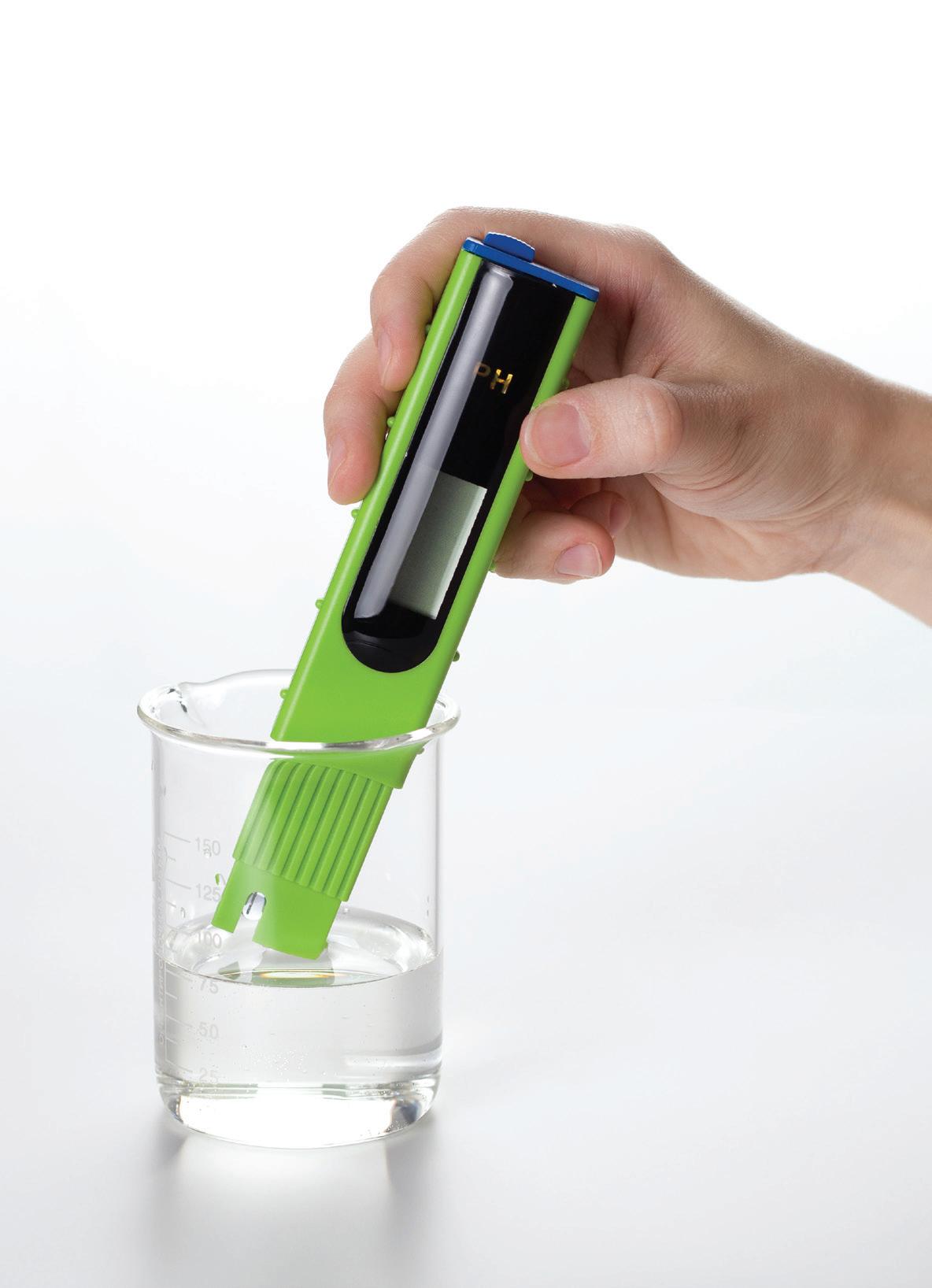
The pH of water is not something we tend to think about often, yet it’s very important to the quality—and taste—of pizza (or just about any food on your menu into which water is cooked). Understanding the pH of your pizzeria’s water can make a big difference.
Water can range on the pH scale from 1 to 14. A pH that’s less than 7 makes the water more acidic, while a pH greater than 7 makes it more alkaline or basic. That might sound like a bunch of scientific nonsense, but all kinds of factors affect the pH of water, including precipitation, chemicals, organic material and soil composition, and these factors, in turn, influence the way that water tastes. And that’s important! A low pH can make water taste sour or metallic, while a high pH can mean that your water is hard, which gives it a baking soda-type taste.

New York pizza is considered so phenomenal because the city’s water clocks in at around 7.2, right near the middle of the pH scale. A pH of exactly 7 is considered pure water, so New York water is pretty darn close. That makes it the ideal pH for taste as well as for yeast. The ideal pH for most microorganisms, such as yeast, is near the neutral point. Anything higher or lower than a pH of 7, meaning more basic or acidic, can disrupt yeast fermentation.
So we all have to move to New York, right? Just kidding. The truth is, any one of us can create a perfect New York-style water profile. It doesn’t matter if we’re doing business in a soft, mineral-lacking water region like Washington State or Oregon or a hard, mineral-rich water region like Las Vegas. All we have to do is adjust our recipe.
New York pizza is considered so phenomenal because the city’s water clocks in at around 7.2, right near the middle of the pH scale.
None of us should be using the same recipe anyway. If you have a pizzeria in Providence, Rhode Island, and take that identical recipe to Florida, California or Chicago and expect it to taste the same, you’re going to be really disappointed. It will be completely different based on the pH level of the water you’re working with, even with the same yeast, salt and flour. What’s different? The salt.
If you use a water with a higher acidity, it will eat your yeast, and you will have to add more salt, which has a retarding effect on yeast. If you use water that’s more basic, you will have to decrease the salt. Note: The addition of table salt, also known as sodium chloride, does not change the pH of water (although other sodium compounds can). Adding table salt will simply change the taste. After all, they say good pasta water should taste like the ocean.

Okay, so how do we figure out the pH level of our water?
1. Get your water professionally tested. Take the time to do a test to determine the pH level of your local water. You’re better off using a certified lab to do this rather than some of those kits you can buy at the drugstore. Testing can cost anywhere from $20 to $150. The test will give you an understanding of your water’s pH level to help determine how much yeast and salt you’re going to use in your baking to get the taste you desire.
2. Invest in a water filter, if needed. Depending on the results of your professional water test, you might want to invest in a water filter. Water filters can remove acidic substances, while water softeners can remove alkaline deposits. There are reverse-osmosis filters for water that contains multiple or high levels of contaminants, as well as carbon filters for improving taste or odors or for dealing with less serious contamination.
3. Buy a pH reader. A portable or pocket pH reader, which you can purchase at any home center retailer for about $75, lets you test your water any time (I test mine once a month, generally). It should not take the place of a professional water test, but it allows you to check your water’s pH from time to time, because pH can fluctuate based on various conditions. For example, two days after a big rainstorm, the pH of your local water might be higher than normal. That’s because rain can wash various types of contaminants and bacteria into a water system, and municipalities will use massive chemicals, including arsenic, to kill off those contaminants. And arsenic destroys yeast! That’s why, two days after we get crushed with rain in Rhode Island, I tell my chefs to up their yeast by two ounces for each batch of dough to offset the higher levels of arsenic.
The bottom line? Sure, everyone talks about New York water. (It can get really irritating, right?) But the good news is that, when you know the quality of your own local water, you can make the adjustments you need to make it taste like you’re running your pizzeria in midtown Manhattan, no matter where you live!
William “Billy” Manzo is a veteran pizzaiolo and the owner of Federal Hill Pizza, with two locations in Providence, Rhode Island.All kinds of factors affect the pH of water, including precipitation, chemicals, organic material and soil composition, and these factors influence the way that water tastes.






There’s magic in the air at Market Pizza, where Megan Jones-Holt casts spells of deliciousness with wild-game pies topped with venison, kangaroo and camel meat.
BY RICK HYNUMThere’s a witch running wild in Stockton, New Jersey, but don’t be afraid. Megan Jones-Holt, owner of Market Pizza, is one of the good witches, a fun-loving, pizza making Sabrina or Samantha who doesn’t have to wiggle her nose to conjure up magic in the kitchen.

Known affectionately around New Jersey as the “Pizza Witch,” Jones-Holt started casting spells of deliciousness in 2017, when she and her husband, Matt, bought Market Pizza— situated in a farmers market called Stockton Market—and quickly garnered attention for her artisanal specialty pies topped with wild-game meat like venison, boar and even kangaroo. And her annual fundraising partnership with a New Jersey nonprofit, Hunters Helping the Hungry (HHH), has elevated her profile as a gifted pizzaiola with a passion for feeding people in need, not to mention a knack for marketing her business in a crowded and competitive field.

That “Pizza Witch” moniker alone is a marketing doozy—and she came by it honestly. “A former manager of the Stockton Market used to be my tester for the weekly specialty pizzas,” Jones-Holt recalls. “One Friday afternoon, I gave her a slice—I don’t recall which pizza it was—and she looked at me and said, ‘You’re a witch,’ a reference to how good the pizza creations were. I just took it and ran with it from that day on.”
Folks in Stockton have been equally mesmerized by JonesHolt’s pizzas. She and her husband previously owned an event rentals company and had no pizzeria experience, but the New Orleans native had been fine-tuning her culinary wizardry at home all her life. Practically from the start, Jones-Holt drew from her NOLA foodie roots to craft pies that were unlike anything most New Jerseyites had ever tasted.
Working with a gas-fired EarthStone 120-PAG oven, she followed the previous Market Pizza owner’s recipes to a T early on. But, over time, she began to trust her own mojo. Not long after she took over Market Pizza, Jones-Holt launched her first fundraiser for HHH, a nonprofit that allows hunters to donate venison to area food banks. “A local hunter can take the deer to a certified butcher approved by the state health department,” she says. “The meat is typically ground and then frozen for distribution to the Norwescap Food Bank. It is then distributed to the local food pantries.”
As a member of the local Rotary Club, Jones-Holt was already friends with a co-founder of HHH, a fellow Rotarian. “Our clubs have always championed food insecurity in our county,” she says. “We would raise funds the traditional way—
“I use loose venison sausage, which is an easier profile to play with, especially if you have a meat that tends to be more gamy. The sausage cooks with seasonings that develop a solid base. Then it’s a matter of where you go with the rest of the ingredients.”
— MEGAN JONES-HOLT, MARKET PIZZAPeaches and burrata featured prominently on this Groundhog Day special at Market Pizza.


Gemignani, 12 Time World Pizza Champion and loyal Ceresota Flour user.


pancake breakfasts, soup cook-offs, etc. So when I bought Market Pizza, I thought this would be a good way to raise some money for HHH, not to mention attracting a specific audience—hunters and foodies looking to try new things.”

Wild venison, she says, is “a very lean meat…and can have a ‘gamy’ taste to it. The butcher cuts the venison with beef fat to give it more flavor.” For her first deermeat special, she marinated the venison in extra-virgin olive oil infused with basil, oregano, tarragon, thyme, salt and pepper—“all good, basic herbs that one would put on ground beef.” She precooked the meat before adding it to the pizza, along with crushed tomatoes, thinly sliced red onions, jalapeños, Parmesan and fresh mozzarella. The venison was crumbled on top, then finished off with birch-smoked salt from Iceland and fresh, sweet basil.
Since that first fundraiser in January 2017, she has delved into more complex flavor profiles to great success. “I love playing with food combinations and really look to combine all the taste sensations—salty, spicy, sweet, sour and, at times,
As Stockton, New Jersey’s one and only Pizza Witch, Megan Jones-Holt leaned into the nickname from the start. “I always wanted a drawing of a pizza witch that reflected me,” she says. “Recently, my talented niece drew one, and we ran with it. Over the years, we have played it up with fun games like Stump the Pizza Witch, where customers name a pizza combo to see if I have made it or not and whether it’s worthy of creating.”
 Megan Jones-Holt shoots her own food photography and tops some of her specialty pizzas with colorful fruits and even flowers for added esthetic appeal.
Megan Jones-Holt shoots her own food photography and tops some of her specialty pizzas with colorful fruits and even flowers for added esthetic appeal.
“Kangaroo is low in fat, so that in itself is a challenge to work with, since most of us Americans are used to a fattier meat. The key is to add some type of fat to counter it. Typically, a hearty cheese does the trick.”
— MEGAN JONES-HOLT, MARKET PIZZA


The gold standard is defined as the best available. With Vantaggio D’Oro Premium Italian-Style Mozzarella Cheese, you get the best. Vantaggio D’Oro is specifically crafted for the specialty Italian Pizzaiolo using time honored, cheese making techniques and the freshest ingredients. A cheese with exceptional consistency, Vantaggio delivers the same flavor, melt, color, and stretch – whatever the cooking conditions. For a cheese you can trust, look no further than the gold standard.
Vantaggio D’Oro is available in traditional whole milk, and part skim loaf and shreds.
Check out our new website VantaggioCheese.com for more information and to contact us.

smoky, as with the venison pizza,” Jones-Holt says. “I use loose venison sausage, which is an easier profile to play with, especially if you have a meat that tends to be more gamy. The sausage cooks with seasonings that develop a solid base. Then it’s a matter of where you go with the rest of the ingredients. I used a tomato sauce, because most people who are a bit afraid to try venison will give it a shot if the rest of the items on the pizza are ones they’re used to.

“Once [the fundraiser] took off and we developed a following, I got more complex in the combinations,” she adds. “I mean, who would have ever thought about combining juniper berries with venison? Don’t ask me how that came about—I was just playing around. Of course, every time I make one of those pies, I want a gin and tonic!”

Venison was just a warm-up for Jones-Holt. She went on to develop recipes using meats ranging from wild boar, elk and pheasant to more exotic varieties, such as kangaroo. “Kangaroo, like most wild-game meat, is low in fat, so that in itself is a challenge to work with, since most of us Americans are used to a fattier meat,” she says. “The key is to add some type of fat to counter it. Typically, a hearty cheese does the trick.
“They are all a challenge, which is why I love doing it,” she says. “Of course, what’s really fun is when I throw in something
really weird, like camel, and it blows everyone’s mind. I love to travel, and most times I get ideas from places I have visited. One year, we went to Jordan, and the camel pizza was influenced by that trip. I used Middle Eastern spices and food combinations: cinnamon, cumin, paprika, cloves, honey, mint, feta, lemon. That was a huge hit.”
And every new wild-game pizza is a guaranteed media magnet. Jones-Holt has no problem with promoting her new specialty pizzas, writing her own press releases and shooting them off, along with photos, to newspapers and digital publications. She has been featured in New Jersey Monthly, Bucks County Herald, the Jersey Bites website and numerous other media outlets.
Media coverage ratchets up every January as Jones-Holt rolls out her latest wild-game pies for the HHH fundraisers. “Customers who have followed this event will drive over one hour just to buy the venison pizza,” she says. “They used to come and make an evening of it, but now (due to COVID-19), they order a bunch of vacuum-sealed pizzas to take home. And because [the promotion lasts for] a month, I have some of the same people come out numerous times. One guy has gotten this pizza three times in a weekend for four weeks in a row. It’s his all-time favorite pizza. This ‘addiction’ is what I call the Pizza Witch magic.”
Market Pizza offers Pizza Witch-themed merchandise emblazoned with a logo created by Jones-Holt’s niece.

This year’s HHH fundraiser has been extended through February, a canny move considering that, as of press time, indoor dining in New Jersey is restricted to 25% capacity. Promoting unusual specialty pies creates fresh buzz and offsets the loss of dine-in business. For Mardi Gras season in early February, Jones-Holt offered a pizza featuring wild boar sausage with grits, red chili flakes, scallions, garlic, provolone and a bourbon/maple syrup drizzle, as well as an Alligator Andouille Jambalaya pie. “I’m also bringing back the Middle Eastern Camel pizza and an Elk Sausage With Pears pizza,” she says.
Interestingly, Jones-Holt helped Hunterdon County’s health department develop its protocols for farmers markets that continued operating after COVID-19 hit New Jersey. Since Stockton Market is a year-round facility, it was able to keep its doors open while many restaurants in the state had to temporarily close indoor dining. For Jones-Holt, that initially
meant expanding from a Friday-to-Sunday schedule, to Tuesday through Sunday. “We tripled our advertising and marketing budget to get the word out that we were still open,” she says. “We had takeout-only and offered curbside delivery. After a month, I was toast, so we scaled back to Wednesday to Sunday.”
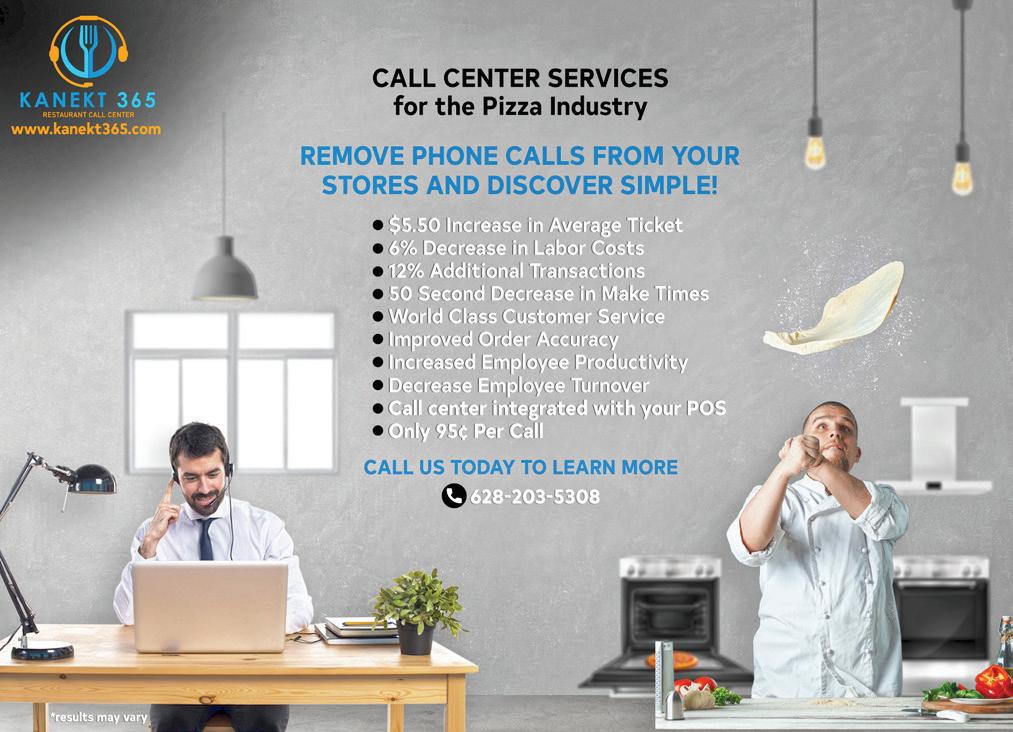
“Of course, what’s really fun is when I throw in something really weird, like camel, and it blows everyone’s mind.”
— MEGAN JONES-HOLT, MARKET PIZZAby Galbani®















Get your pizza business in the best shape ever with Galbani Premio Mozzarella featuring Tigrato Cut Shreds. This exclusive cut is shorter and wider than standard shreds, providing a uniform melt with better coverage—so you can top more pies with less cheese. Plus, it has exceptional yield and reheats beautifully for takeout and delivery. Put Tigrato Cut Shreds to the test and see why nobody tops Italy’s #1 cheese brand.




Being surrounded by regional growers means she has her pick of some of the finest and freshest local ingredients in the area. “Hunterdon County, New Jersey, and Bucks County, Pennsylvania, provide us with a wealth of local foods from the numerous farms and orchards within a 10- to 15-mile radius,” Jones-Holt says. “That includes anything from Jersey Fresh Tomatoes that we use to make our sauce or red gravy to eggs, potatoes, peppers, radishes, Brussels sprouts, ramps, mushrooms, cheese and my favorite ingredient, fruit. It’s fun seeing people’s reactions to fruit on a pizza. ‘Fruit? Really? No way!’ Then it’s, ‘OMG, I never would have thought of a pizza with pears, cranberries, blueberries or apples!’ Fruit like tomatoes, peppers and other veggies are colorful and pretty and photograph well, which means it sells.”
Jones-Holt loves getting to know her customers, even though dine-in traffic remains limited. Market Pizza is a small, cozy, BYOB getaway for locals, with a liquor store next door and a craft brewery down the street. “Our customers like to sit at the pizza bar and chat,” she says. “At times, I feel like the bartender, hearing people’s problems, love triangles, etc.”
Market Pizza is a family business through and through, run by Jones-Holt and her husband, with their son and daughter-in-law as partners. Customers become part of the family, and Jones-Holt gives them a little sass now and then to keep the mood light and fun.

“People come in for great food, lousy advice or a bit of attitude, especially from the Pizza Witch,” she says. “Once in a while, a new customer walks up when I have my hands full of dough and asks me if I can take orders. My standard line is, ‘No, I don’t take orders. I only give them.’ [There’s also] a sign that reads, ‘Free Beer Tomorrow.’ People think it’s real. I tell them they misunderstood the sign. If they bring beer tomorrow, it’s free for me.”
But there’s no misunderstanding the appeal of the Pizza Witch theme. Even kids are enchanted, Jones-Holt says. “They love the mystique behind the Pizza Witch, who made them a pizza that they tell their parents is the best they’ve ever had. Over the years, they’ve drawn us pictures, given us thank-you and Christmas cards, and even brought their report cards or summer-camp achievement certificates to share with us. We are a part of their lives and so enjoy watching them grow up around us.”






























































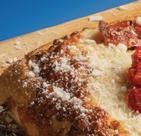

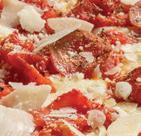
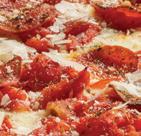
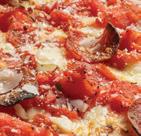
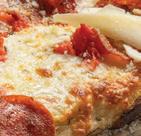







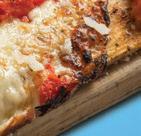
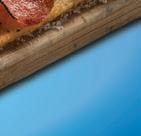


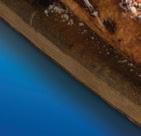

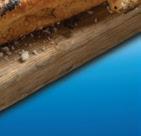








































Between the approach of springtime and the COVID-19 pandemic ushering in an era of outdoor activities, it’s the perfect time to establish (or enhance) your alfresco dining.
BY TRACY MORINAs local governments scrambled to help rescue COVID-affected restaurants during 2020, outdoor dining setups suddenly became a necessity. After all, with indoor dining capacity greatly reduced (or forbidden altogether), tables and chairs spilled out onto sidewalks, patios, streets and parking lots wherever possible.

And the focus on outdoor dining looks like it’ll be sticking around for at least part of 2021. Luckily, warmer weather is on the way—and we asked industry experts for their top tips to help you prepare. Read on to find out how you can get your operation alfresco-ready for springtime and beyond.

With the push for increased outdoor dining space over the last year, landlords and operators have gotten creative. In some cases, restaurants’ outdoor spaces are a short distance away or carved into a parking lot. Therefore, Mark Moeller, president of The Recipe of Success, a national restaurant consulting firm in Westport, Connecticut, believes that a restaurant’s brand should be carried through its entire layout, including outdoors. “The look, feel, colors, chairs and tables outside should all reflect the current design inside—and this is especially important if the outdoor dining area isn’t adjacent to the restaurant,” he says.
Mary Jane Riva, CEO of Pizza Factory, based in Oakhurst, California, with more than 100 locations, emphasizes that an inviting atmosphere is a must for outdoor dining, so staying on top of your team to monitor for cleanliness and sanitizing is important. “No one wants to sit in an area that looks unattended to,” Riva says. “Lighting is important and certainly can be fun—and not very expensive. But less is more: You want to provide an atmosphere but not take up all of your real estate with decor.”
Ultimately, Moeller says, outdoor dining spaces should not look like an afterthought and will vary according to use. “Conscious thought needs to go into whether the space will be an extension of the dining room, with servers, or if it will be used solely by takeout patrons,” he notes. “This will drive the specific needs of the design. Seating should be comfortable, tables level, heaters placed where appropriate, and lighting positioned to provide both ambience and security.” You can also consider installing an exterior security camera for safety.
With spring right around the corner, Tim Spiegelglass, owner of St. Louis-based Spiegelglass Construction Company, stresses that owners should start conversations now with their landlord and/or city officials to understand what creative outdoor dining options might look like. “We’re seeing some cities allow outdoor seating on the sidewalks, streets and/or parking lots due to the pandemic,” he says. “Reach out to your city to understand the regulations that are in place.”
You can also inquire about tenant improvement (TI), in which landlords and restaurant owners work together so that both parties benefit. “TI might include adding an overhang on an existing outdoor patio to increase the number of meals that can be served outside,” Spiegelglass explains. “It might also include expanding or renovating the patio area, adding a pickup window, and/or adding dedicated parking spots for curbside pickups.”
If you’re creating a new space, Spiegelglass recommends reaching out to your architect and general contractor to think through what an efficient and effective outdoor space might look like for you. “As you’re designing your space, think about the flow of getting food and
“Private dining pods and bubble pods can accommodate those who prefer additional privacy or protection from the elements and can help make outdoor dining more efficient and comfortable.”
— EUGENIA LEBEDYNSKA, MCDONALD PAPER & RESTAURANT SUPPLIES
SPIN IT TO WIN IT! WE WANT TO SEE YOUR BEST 3-MINUTE SPINNING ROUTINE!



















The U.S. Pizza Team and PizzaTV will host the Virtual Acrobatic Pizza Spinning Championship LIVE!



























































































































































Submit your 3-minute routine with good lighting, sound, and spectacular spinning by April 7th, 2021, for your chance to win cash prizes and the title of Acrobatic Spinning Champion.
















































Finalists will be selected from all submissions and perform their routine LIVE for a panel of qualified judges, April 14th.
For more information about the VAPSC, rules and registration, visit www.uspizzateam.com/vapsc, or contact Brian Hernandez at brian@pmq.com or 662-234-5481 x129.
drinks from the kitchen to your guests, limiting the number of steps taken, and utilizing one-way pathways if possible,” he advises. “You’ll need to take spacing requirements into consideration for seating, of course, keeping in mind that those could change as the pandemic evolves.”
Spiegelglass stresses that an owner should get his general contractor (GC) on board early to get the permitting process started and determine costs and timing. “Your GC can help you figure out what’s feasible for your space— everything from MEP (mechanical/electrical/ plumbing) to utilizing the right materials for weather, like nonslip concrete for your patio,” he says. “Also consider building openness into your outdoor space, so instead of a closed-in four-season patio, consider a pergola or roof structure for coverage while leaving the space open, per city requirements. Most cities are requiring a certain percentage of open air on the sides to allow for circulation.”
Eugenia Lebedynska, CPO of McDonald Paper & Restaurant
Supplies in Brooklyn, New York, recommends privacy-friendly layouts and furniture when setting up your outdoor dining area. “Use fences or dividers, string lights and planters to make your outdoor space as inviting as possible,” she suggests. “If you don’t have a permanent patio, you can also use dining pods; some are easy to install, decorate and maintain. Moreover, private dining pods and bubble pods can accommodate those who prefer additional privacy or protection from the elements and can help make outdoor dining more efficient and comfortable.”
You’ve likely heard that outdoor dining is safer during the COVID19 pandemic. That’s because the virus mainly spreads through the air, and better-ventilated spaces help dissipate virus particles, according to Janilyn Hutchings, a certified food safety professional at StateFoodSafety in Orem, Utah. To add additional layers of safety, she shares her top tips for outdoor dining:
• Don’t cut off airflow. If you plan to install a removable roof or tent to protect guests from inclement weather, make sure there are still sufficient gaps to allow fresh air to circulate. For example, refrain from unrolling canvas walls all the way down, instead leaving space at the bottom for air to get in and out.
• Space tables properly. According to CDC guidelines, all customer parties should be seated at least 6’ apart to minimize the risk of spreading COVID-19, which also applies to guests eating outside.
• Post physical reminders to wear masks and social distance. Post signs and/or use tape on the floor to help parties remember to maintain distance. Ask guests to wear a mask anytime they’re not seated at their assigned table.

“As you’re designing your space, think about the flow of getting food and drinks from the kitchen to your guests, limiting the number of steps taken, and utilizing one-way pathways if possible.”
— TIM SPIEGELGLASS, SPIEGELGLASS CONSTRUCTION COMPANY



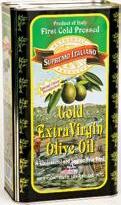
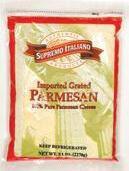



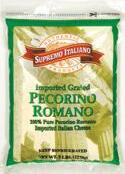
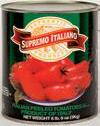



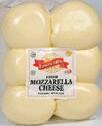





















Spiegelglass notes that restaurant owners may want to add Plexiglas dividers, taller booths, and/or modular furniture to allow for additional seats and flexibility outdoors. “Even though you’re serving outdoors, you can still use sneeze guards,” Lebedynska adds. “Sneeze guards are excellent table dividers and unobtrusively enhance safety. Best of all, with protective guards in place, you can safely seat more customers outside.” Finally, she advises, use outside heaters if permitted, since chilly weather could deter some guests in the earlierspring months.
In pandemic times, consider upgrading your protocols and setups. For example, Moeller notes that small additions can help optimize functionality—think a server/ busser station equipped with bus tubs, trash bins with swivel lids, sanitizer, and a way to store cleaning cloths. Meanwhile, single-serve items should not be stored in any part of the outdoor dining space unless it’s continuously staffed.
“Guests should not have the ability to touch something that may be provided to another guest; cross-contamination is a real concern in terms of transmission of bacteria,” Moeller
stresses. “This has always been the case in terms of food safety, but there was minimal focus on single-serve items in public spaces until the pandemic hit.”
Other key points to keep in mind in terms of COVID compliance, according to Moeller: proper spacing between tables/chairs; disinfecting first thing in the morning (prior to first service) and again between lunch and dinner meal periods; sanitizing tables and chairs after every use; and cleaning/maintenance of the area, including seating, flooring, trash cans and server/busser stations. Many states also have requirements that tables must be covered (under a tent or umbrella, for example).

Meanwhile, Riva suggests tapping QR codes so that customers can download your menu. “And, if you have online ordering, tie it into that for ordering so you know who ordered, where they are sitting and their name, without too much interaction,” Riva adds. “Spacing is important as well. Make sure chairs are sanitized, especially if they have arms.” Finally, make sure your outdoor space offers proper ventilation to keep both service staff and customers as safe as possible.






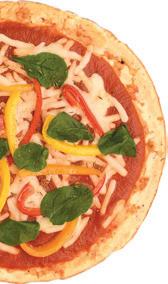



Want to create lip-smacking depth of flavor on pizzas, salads, appetizers and more?
Follow these expert tips for choosing and using oils, vinegars and spices across your menu.
 BY TRACY MORIN
BY TRACY MORIN
Flour, water and yeast may comprise the cornerstones of any successful pizzeria, but it’s difficult to imagine any menu truly shining without the aid of must-have flavor enhancers like oils, vinegar and spices. From a zigzag of balsamic glaze across a pizza fresh out of the oven to a healthy drizzle of high-quality olive oil atop gelato, there’s hardly a menu selection that doesn’t benefit from a little liquid oomph—or a sprinkle of spices.
Still, you might feel stuck in the same ol’ when it comes to making the most of these must-have kitchen ingredients. If you need a bit of inspiration for using oil, vinegar and spices in more creative ways, look no further!
Stefano Velia, a now-retired pizza chef of 30 years and owner of the blog Pala Pizza, reaches for authentic balsamic vinegar of Modena for pizza applications—especially one topped with caramelized onion, goat cheese and arugula. “This same balsamic vinegar can be used across the menu, from salads to fruit to desserts,” Velia says. “A high-quality olive oil also imparts a more robust flavor on pizzas—if the pizza is not on the greasy side to begin with, such as a pepperoni pie. A light drizzle to finish off a fresh-out-of-the-oven white pizza is perfect. Or use a garlic-infused olive oil as a sauce replacement for white pizzas.” Finally, Velia notes that drizzling pies with hot honey (such as Mike’s Hot Honey), especially on pepperoni pizzas, has become “quite the craze.”
Feel less than inspired? Looking toward ethnic cuisines is a surefire idea-starter. For example, Emily Ackerman, a Lebanese-American food blogger at A Pinch of Adventure, points out that elements of Middle Eastern cuisine can easily jazz up pizzas and flatbreads. “One kind of Middle Eastern flatbread pizza is known as Manakish: Za’atar seasoning is mixed with high-quality olive oil and lemon juice, then spread onto flatbread dough and baked in a pizza oven,” Ackerman explains. “Za’atar seasoning (a roasted blend of thyme, oregano, sesame seeds and sumac) can be used to spice up salads, grilled meats and breads.” To make a basic za’atar spread, Ackerman recommends blending 4 tbsp. za’atar seasoning, 4 tbsp. olive oil and the juice of half a lemon.


“Za’atar seasoning (a roasted blend of thyme, oregano, sesame seeds and sumac) can be used to spice up salads, grilled meats and breads.”
— EMILY ACKERMAN, A PINCH OF ADVENTURECombining herbs and sesame seeds, the Middle Eastern spice blend called Za’atar is beloved for its savory flavors. Strawberries and balsamic vinegar or balsamic glaze are a classic pairing for everything from pizzas to desserts.

Adriana Perez, owner of San Diego-based Driana Foods, is a fan of sustainable, mono-varietal Spanish olive oils, like Arbequina, Cornicabra, Manzanilla and Picual (her go-to brand is Casas de Hualdo). “Picual olive oil, with its fresh basil and tomato plant aromas, pairs well drizzled over Italian flavors, while Cornicabra works well on pizzas, especially white pies. Its refreshing aromas of arugula and green apple brighten the milder, creamy flavors,” Perez explains. “As an alternative to balsamic, I like Spanish sherry vinegar.”

Arbequina varieties work well with sweets—try it over vanilla ice cream with balsamic vinegar of Modena. Or, postbake, add Arbequina or Manzanilla on dessert pizzas (such as Nutella and berries). Meanwhile, because plant-based proteins like pepperoni and sausage can dry out when cooked, a drizzle of Manzanilla adds moisture while pairing well, flavor-wise, with these alternatives.
To spice up pizzas and other Italian items, Perez advocates smoked paprika, sumac and Aleppo pepper flakes. “Smoked paprika adds beautiful color and flavor to tomato sauce,” she says. “Sumac adds a citrusy acidity to white pizzas. And, for a

kick, instead of red chili flakes, try Aleppo pepper, a Middle Eastern spice with moderate heat and a slight fruity finish.”
Oils, vinegars and spices are musts to spruce up the menu, but how do you choose—and use—the best types for you? Two restaurant consultants share their top tips:
What’s your type? When choosing olive oils, think about what speaks to your brand identity, suggests Nancy Jo Seaton, president of Seaton Food Consultants in Stamford, Connecticut. If you’re “authentic Italian,” go for a fresh, darkgreen extra-virgin—or several, if possible. “Offer an olive oil flight to customers with a side of home-baked bread or breadsticks,” Seaton advises. “Three different oils would be enough for a shared appetizer with some bread and fresh mozzarella and tomatoes. Consider oils from different countries (like Greece, Spain and Italy) or from different regions (Italy or California).”
Infuse flavor. If your restaurant is more experimental, modern or casual, offer a similar appetizer featuring flavored oils (which are less expensive), like garlic, rosemary and basil.
“Go past a basic Google search, understanding how an oil or vinegar is produced, what attributes generate flavor profiles, and what area of the world is best suited to growing grapes or olives.”
— MARK MOELLER, THE RECIPE OF SUCCESS
You can even make your own infused oils. But, Seaton advises, keep in mind potential issues with food safety. “Purchasing flavored oils is likely cheaper, because you won’t have to toss out unused portions,” she explains. However, premade flavored oils can be used to improve or mask the flavor of a substandard oil. Make sure the quality matches the price.

Mark Moeller, president of The Recipe of Success in Westport, Connecticut, agrees that infused oils and vinegars are fun to experiment with and can add another dimension to pizzas and other dishes. “We especially like playing with fruitinfused vinegars, like sweet peach white balsamic,” he says. “Fruit infusions add a touch of sweetness and can be versatile in savory, salad and dessert pizzas. We also enjoy using thyme, basil, cilantro, rosemary, mushroom and, most recently, ginger. The possibilities are endless.”
Fresh is best. Seaton stresses that you must maintain oils’ freshness over time, especially as they’re exposed to light and oxygen. “Oil can turn rancid in as little as six months, so knowing the age of your oil is essential, especially if you are going to make a sauce with it in-house, like a pesto,” Seaton says. “Be sure to taste your oil before you serve it—in any format—to ensure it does not have ‘off’ flavors or is turning rancid.”
Fortunately, you don’t have to look far in your quest for topquality, fresh olive oils: California produces some of the best, notes Amy Hsiao, head of marketing for Lodi, California-based Corto. “California is leading the way today with oils focused on the freshest fruit grown with sustainable practices,” she says. “California has the strictest olive oil standard in the world, which actually includes freshness metrics.”
Do your research. Moeller believes that research is perhaps the best way to ensure that you’re using top-quality ingredients. “Go past a basic Google search, understanding how an oil or vinegar is produced, what attributes generate flavor profiles, and what area of the world is best suited to growing grapes or
olives,” he recommends. “Reach out to local distributors and producers and have open discussions with chefs and retail stores to gather as much information as possible.” Ask about the specific smoke point of each oil (this will vary by producer; mass-produced, lesser-quality oils have a lower smoke point). Finally, to choose wisely, do a taste test on the raw products, and then use the top two or three choices as a base in the target recipe to see how each performs.
Spice it up. Don’t overlook the spice rack! “Chefs often miss out on stocking aromatics like thyme, rosemary, sage, dill, saffron, cumin and curry,” Moeller says. “We always have some nutritional yeast on hand, because it’s versatile—as a pizza topper, on salads or with vegetables—and provides a level of nutritional balance that many people require, as it is packed with B vitamins.”
Experiment across the menu. Are your customers heat seekers? Seaton recommends creating different types of heat via oils—like transforming a chicken breast with an oil-based Calabrian pepper paste, used as a marinade. Or go for a classic, pairing fresh strawberries and aged balsamic vinegar. “If you (or your customers) don’t want to spend a fortune on aged balsamic, reach for a balsamic glaze, which is fortified with sugar and other flavorings,” Seaton suggests. “Allow the strawberries to sit in the glaze for up to an hour, and then put over a simple ice cream or panna cotta—easy, different and delicious!”
 Tracy Morin is PMQ’s senior copy editor.
In addition to basics like salt, pepper, basil, oregano, parsley and bay leaf, Mark Moeller recommends spice-rack additions like aromatics and nutritional yeast.
Tracy Morin is PMQ’s senior copy editor.
In addition to basics like salt, pepper, basil, oregano, parsley and bay leaf, Mark Moeller recommends spice-rack additions like aromatics and nutritional yeast.
“California has the strictest olive oil standard in the world, which actually includes freshness metrics.”
— AMY HSIAO, CORTO
VersaFlex, headquartered in North Ridgeville, Ohio, added the manufacturing of masks and face shields to its toolbox during the COVID-19 pandemic. The company, which specializes in customizable, high-quality thermal bags and cases, adapted its operation to provide these increasingly necessary and highly innovative products for its restaurant clients.
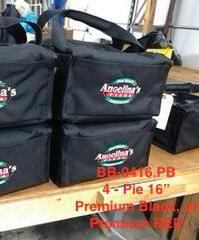
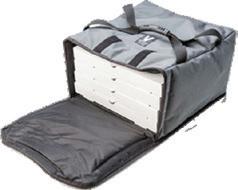


However, these are no ordinary masks. Thanks to a gasket-style layer that flips up at the top of the mask and covers the nose and cheek bones, air is forced out of the sides of the mask rather than straight up. This makes them more convenient for people who wear glasses—ensuring their specs don’t get foggy—as well as easier to talk in and wear for long periods of time.
VersaFlex focuses on American-made, high-quality products, including washable pizza bags that come with a five-year warranty and keep pizzas hot and dry. Customers’ only complaint? “They last too long,” jokes VersaFlex owner Larry Nolan.

“It takes just as much labor to make a crap bag as it takes to make a quality one, [so you] just might as well make a quality one,” Nolan says. “Same with pizza—it takes just as long to make a bad pizza than it takes to make a good one, period. Make a good one, it pays off.”
Nolan applies this same philosophy to all of his products, including his variety of masks. As new coronavirus variants are becoming more contagious and the Center for Disease Control and Prevention studies the efficacy of double-layering masks, the quality and proper wearing of masks is increasingly important.
VersaFlex’s masks are not only designed for more comfortable longtime wear, its three-layer design provides all the protection necessary. Their innovation has paid off as they are in process of getting patented by the U.S. Patent and Trademark Office.

Masks, much like social distancing, contactless delivery and carryout, are staples of current daily life for pizzeria owners, operators and employees and a standard piece of equipment for any and all industries still in business today. VersaFlex’s customization capabilities also provide an added branding advantage. They can be customized with your restaurant’s logo and worn by your employees or sold to your customers. Nolan has already created designs for different corporate brands, various branches of the U.S. military, the local postal union as well as various local high schools, including his own alma mater.
Learn more about VersaFlex by visiting their Etsy site at etsy.com/ market/versaflex, or contact Larry Nolan at versaflex@gmail.com.
Unified Office’s Total Connect Now and patented Visual Performance Suite-managed communication service shone a bright light on its quick-service restaurant (QSR) customers during the COVID-19 pandemic.
During the pandemic, carryout, takeout and delivery became virtually the only eat-out options for consumers, and, to this day, QSRs rely heavily on phone orders. Pizza stores receive 70% of their revenue (peak order calls) on Friday, Saturday and Sunday. Missed order calls are quite common and represent lost store revenue. But Unified Office’s process captures those peak calls and delivers increased customer revenues!
“It’s just the simple fact of never having a busy signal,” says John Roy, co-owner of Pizza 911, a six-store independent pizzeria operation in New Hampshire. “When you see it in action, it’s unreal. Our revenue loss was outrageous because we were missing so many calls.”
Using VoIP (Voice Over Internet Protocol), real-time monitoring and an in-store “Wallboard” display of key performance indicators to restaurant staff, Unified Office helps pizza operators capture more revenue from the inside out. Note that a single Pizza 911 store saw its annual revenue increase by 70% and is capable of handling a record 14 concurrent calls, thanks to Unified Office’s operational optimization.
“It allows us to go in and see how many calls we’re getting and measure how soon we’re answering the calls,” explains Shane Switser, owner of The Pizza Man in Lyndonville, Vermont. “We were missing a lot of calls that we didn’t realize we were missing.” The single-store pizzeria increased its annual sales by 35%. “Unified Office is much more than a phone system,” Switzer says. “It’s a sales tool and has helped me increase my business this year, and I couldn’t have done this without them.”
From its patented Higher Quality Routing Protocol, which provides crystal-clear call quality, to its automatic broadband failover system that avoids outage revenue losses and its real-time reporting for both store managers and owners, Unified Office helps pizzeria owners increase operational effectiveness and revenue growth for operations of all sizes.

Try testing for missed calls. Call your own store(s) at multiple peak order times and on peak days and count the calls it takes to connect. Multiply that number by your average ticket. Then invest in a service that increases operational effectiveness and helps capture all peak revenue!
Learn more about Unified Office by visiting unifiedoffice.com/ solution-for-independent-operator/.
NMI Inc. offers a variety of all-wood and aluminum baking peels and a full line of laminate boards. The all-wood peels come in different shapes and sizes and can be custom-imprinted with your logo. The same goes for NMI’s laminate boards, available in cutting, serving, peel shapes, equislice, makeup, flatbread and other options. 734-266-2222, NMINC.COM
Grandé Avorio Fresh Mozzarella Loaf is a traditional East Coast specialty cheese with a clean dairy flavor. This tender, delicate cheese has minimal flow and stretch, making it ideal for its main purpose—putting your Grandma-style, Brooklyn-style and other specialty pizzas on the map. This is an opportunity to deliver East Coast authenticity and unique flavor for repeat visits and increased sales. 800-847-2633, GRANDECHEESE.COM

Oddlygood’s plant-based cheese is made by chefs for chefs and will enhance your pizzeria’s menu and entice your customers. Mouthwatering and wonderfully meltable, these vegancheese alternatives create the ultimate good-for-you (and the planet) takeout pizza. Oddlygood’s plant-based cheese alternatives are available in mozzarella shreds and logs, and cheddar shreds. ODDLYGOOD.NET/US/FOODSERVICE


Leer’s custom walk-in coolers and freezers are engineered and manufactured individually and can take four or more weeks to ship. But Leer’s Quick Ship options are predesigned, premanufactured and always in stock, ready to ship in two to 10 days, depending on options. They’re available in 20-plus standard sizes, meaning you can find the capacity you need at a price you’ll like without having to wait a month for delivery. 800-766-5337, LEERINC.COM

There are many ways to utilize Nutella within the pizza segment. Dessert pizzas are a perfect fit. And customers can even take them to go! Offer a customized dessert pizza made with Nutella as an option so customers can experience this indulgent treat at home. Visit Nutella’s website to get the recipe for the pictured pizza and more pizza recipes. 800-408-1505, FERREROFOODSERVICE.COM

Kanekt 365 is a full-service call center for the pizza industry. Its Call Center POS interface integrates with more than 60 POS systems, allowing its call agents to submit your customer’s orders directly into your POS system for printing in the kitchen. Kanekt 365 helps you streamline operations, increase sales, decrease expenses, improve productivity, provide a superior customer experience and boost profits. 833-203-5308, KANEKT365.COM









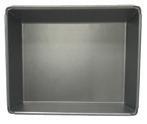





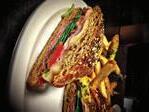












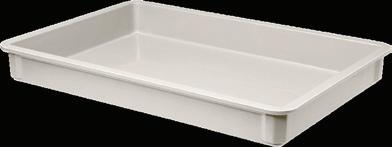

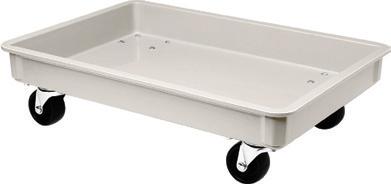
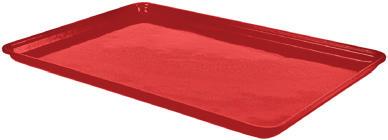

FibraMent Baking Stones
The professionals’ choice for evenly cooked, perfectly crispy crust on pizza and bread. We offer a wide variety of stock sizes and custom options. NSF certified.






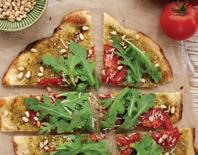


FibraMent.com | 708.478.6032


COMPUTER SYSTEMS: POINT OF SALE
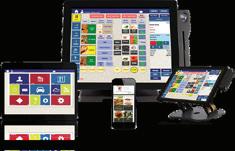











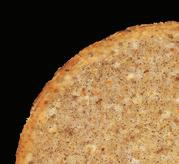











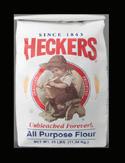
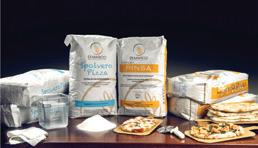






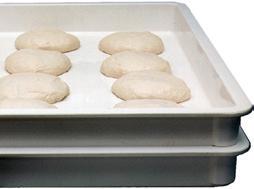





































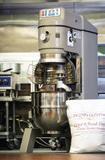








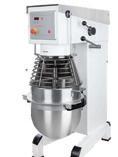


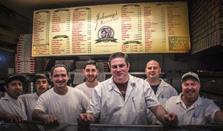
























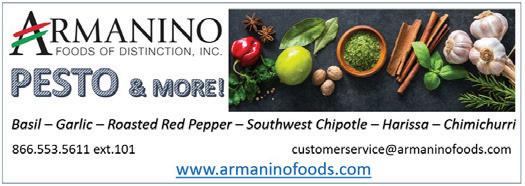























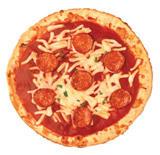
Celebrating 50 years of service in 2021, this Massachusetts institution has joined four generations of family members under the guidance of pizza patriarch James Fauci.
James Fauci’s father must have spotted a unique talent in his teenage son, who spent his high school years working in a pizzeria. After graduation, his father asked if he’d like to open his own shop. The family scouted financing for a two-table location in Lynn, Massachusetts, opening the doors to Fauci Pizza in 1971. “My mom, whose parents were from Italy, did our dinners, like ravioli and stuffed shells, using my grandmother’s recipes,” James recalls. “The first year is always the toughest, but after two months, it took off—it was nonstop after that.”

The pizzeria eventually moved next door in 1977, when a used car lot space became available, and sales tripled with the new, more-visible location. Though his two brothers eventually tried other careers away from the family business, James relished his restaurant responsibilities and logged 60- and 70-hour weeks for years. “I’ve always worked in restaurants and liked the food business; it’s been a big part of my life,” James says. “I like working with young employees, leading them in the right direction, teaching them to be the best they can be. And I like working with the public, meeting customers and talking to them. It’s like a big family.”

Today, his own family has also spent years in the business, including his wife, Paula; three sons, Jimmy, Michael and Luke; and three daughters, Lori, Danielle and Michelle. His 12-year-old granddaughter, Maddie, is already
BY TRACY MORINa rising star: She hosts Maddie’s Kitchen segments on Facebook videos— skits that show the personable youngster whipping up Fauci favorites in the pizzeria. James himself handles Facebook and Instagram pages for the business—he’s always enjoyed photography, and he learned the necessary tech skills to handle video shoots and social media in-house.
Meanwhile, Fauci Pizza maintains strong ties with the community that has supported the business for so many years. James donates pizzas for numerous local fundraisers, works with sports concession stands to raise money for kids’ teams, and hosts a Christmastime fundraiser for the police, among other efforts.

Running a one-location pizzeria that does 95% takeout and delivery, the Fauci family has sustained a steady focus throughout five decades, living on basic but indispensable principles: Treat people as you’d want to be treated, love what you do, don’t cut corners, and never be afraid of old-fashioned hard work. “We just took care of our one store and gave it 110%,” James says. “That first day we opened, I never dreamed we’d be in business this long. But I was always glad to go to work, and I still love being here. Now my kids have to tell me, ‘Go home, Dad!’”

Tracy






